
What Are the Best Social Platforms to Integrate With Your Ecommerce Store? (2024)
With 83 per cent of the Australian population active on social media, it’s clear that merging your ecommerce website with various social media platforms will prove extremely beneficial to improving your online presence.

The social commerce market is set to grow to more than $2 trillion globally by 2025, so it’s safe to say that this is a marketing strategy you can’t miss out on in 2024, as integrating your brand into social media platforms will help you sell products, find new potential customers and build brand awareness.
WHAT IS A SOCIAL COMMERCE PLATFORM?
A social commerce platform allows people to shop and purchase online products directly through their chosen social media app. They allow businesses to build a unique shop within the platform to allow more customers to see their products and are extremely convenient for people wanting to shop through their social media. Examples of social commerce platforms include Instagram, Facebook, TikTok and Pinterest.
Social commerce platforms have changed the way people shop online, and now customers can shop directly from their social media without leaving the app, helping to improve the online shopping experience and connect brands with potential customers.
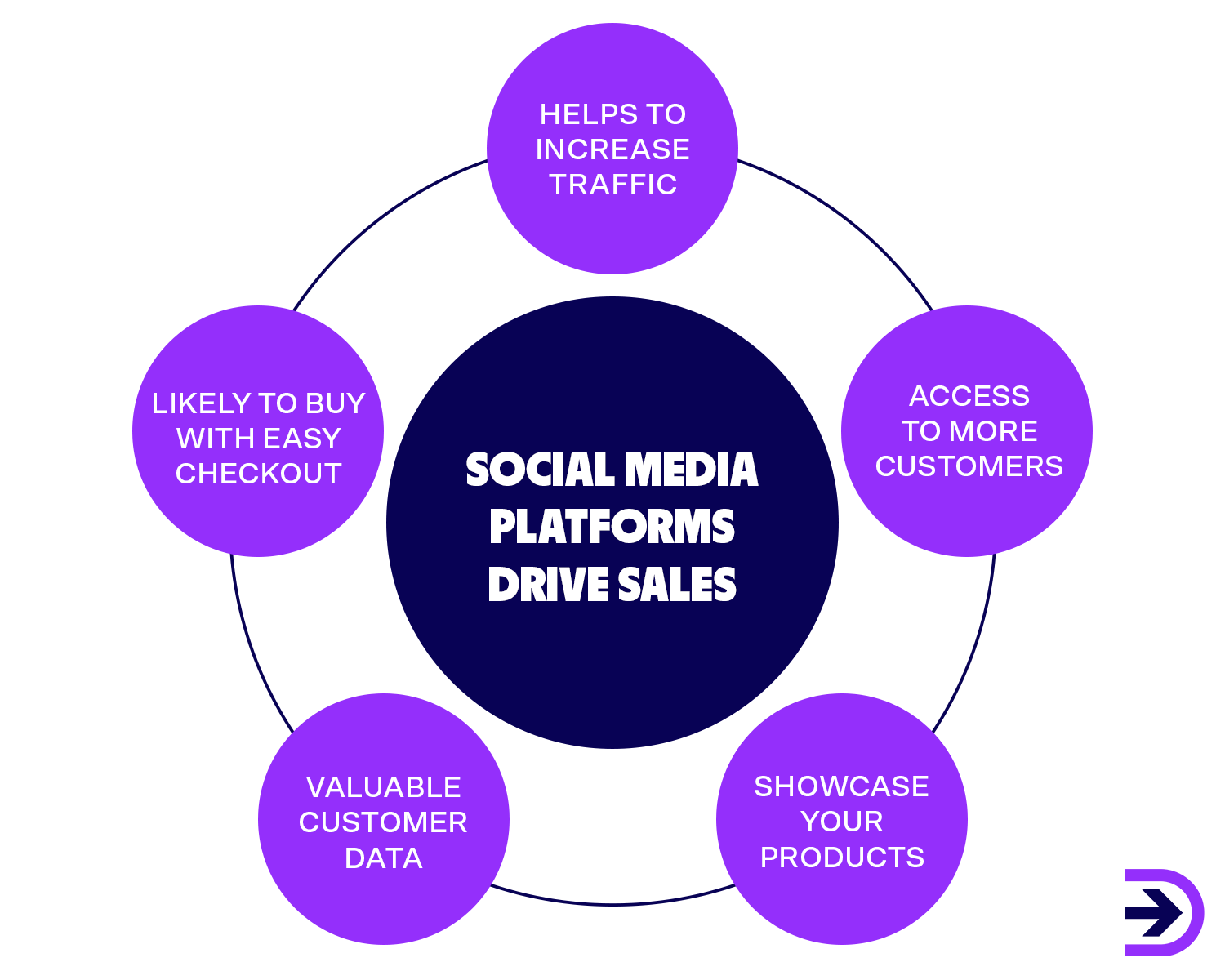
How can social media platforms drive sales for your online store?
There are many benefits to merging ecommerce websites with social commerce platforms, some of which include:
-
Helps to increase traffic and brand awareness
-
Customers are more likely to buy with easy checkout
-
Gives you access to more customers
-
Gain valuable customer data and find your target audience
-
Showcase your products
Gives you access to more customers
Withthe majority of Australians using social media, it’s safe to say that integrating your business with social media will give you access to a much larger customer base, and experts are predicting that the number of social media users will reach 5.17 billion globally by 2024 so you know you’re not going to regret putting time into social commerce in the future.
Helps to increase traffic and brand awareness
Because social media platforms give businesses access to billions of new customers each month, and by placing product tags on each of your posts, you can encourage users to follow the links to either your website or the products themselves. Shoppers are more likely to purchase from an ecommerce brand that have a social media presence and are 71 per cent more likely to buy products based on social media referrals.
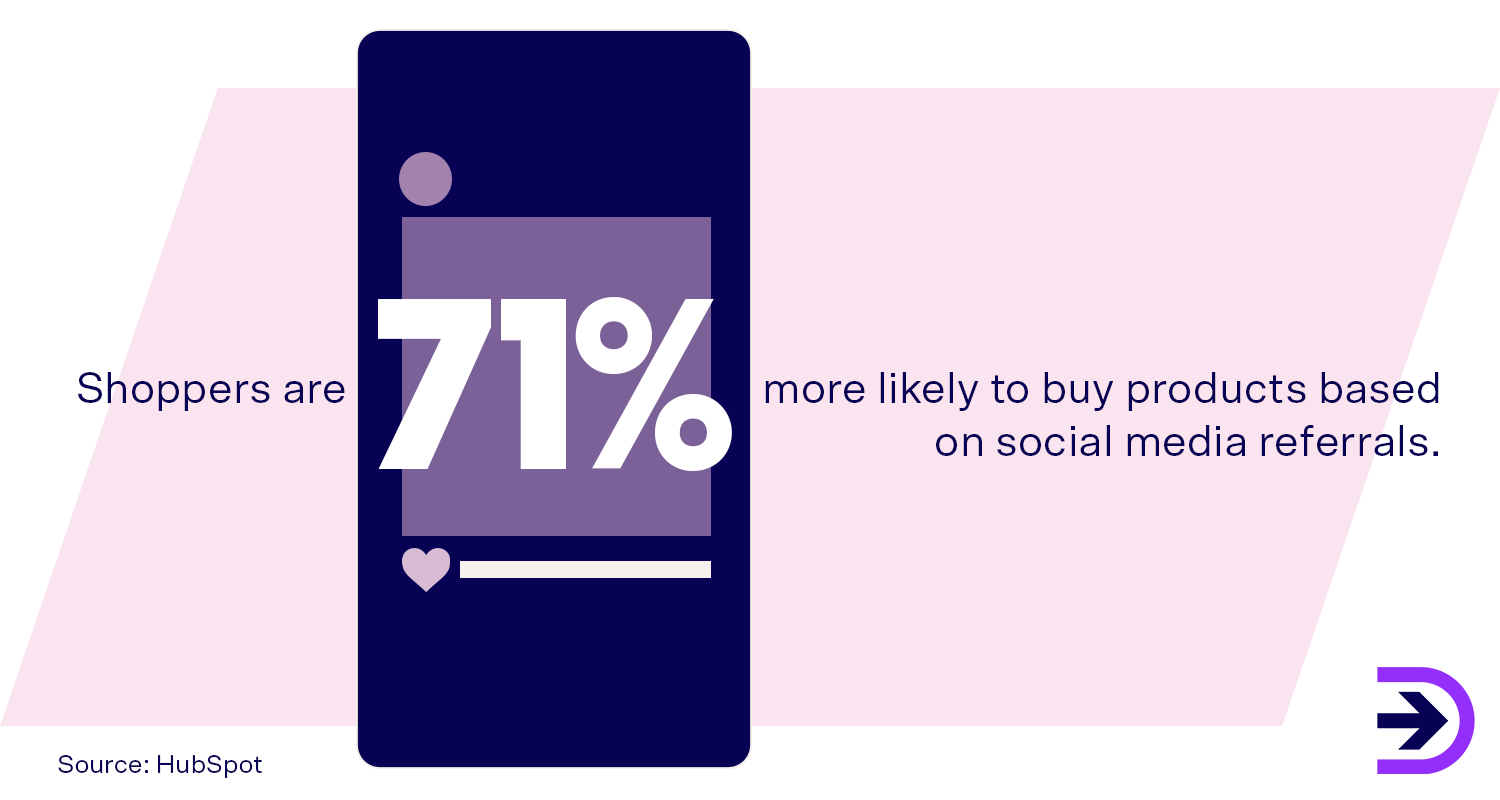
Customers who have never heard of your brand before will be able to learn more about your products and services, and they can follow along with your journey and stay up to date on your latest posts.
Customers are more likely to buy with easy checkout
With social commerce, your customers can experience a more seamless checkout process. Integrating your products into a social media platform means shoppers don’t get their experience interrupted by being taken to another website, everything takes place in the app and people who are scrolling their phones looking to conveniently purchase an item can do so easily.
Most shoppers don’t purchase on their first visit to a website, and many shoppers can forget about their carts or the brand altogether. Having social media channels allows businesses to be more present in the mind of the customer, reminding them about products they had been wanting to try and generally allowing them to get to know them without forgetting that the brand exists. Once the customer knows your brand and makes the decision to buy, they are likely to do it through their chosen social media app, and having an easy checkout that doesn’t take the customer out of the app will make them even more likely to complete the purchase.
Gain valuable customer data and find your target audience
Using social media with your ecommerce business allows you to get snapshots of how your customers respond to promotions and posts, giving you valuable information for future marketing strategies. A marketing tool like Instagram Insights gives you detailed data about your demographic and includes the age, gender and geographical location of your customers. Facebook Insights offers things like job titles and education and can also provide you with information on their hobbies and interests. Having access to this data means you can more accurately tailor posts to your customers and target them to increase customer engagement.
Retailers can also gain customer feedback through direct messages or comments to find out if the customers are happy with your services and quality and if there is anything you as a retailer need to change.
Showcase your products
With social media platforms, you can post stories, videos and grid posts that highlight the benefits of your products, giving your customers a much better opportunity to get to know the product compared to if they were seeing a photo on a website.
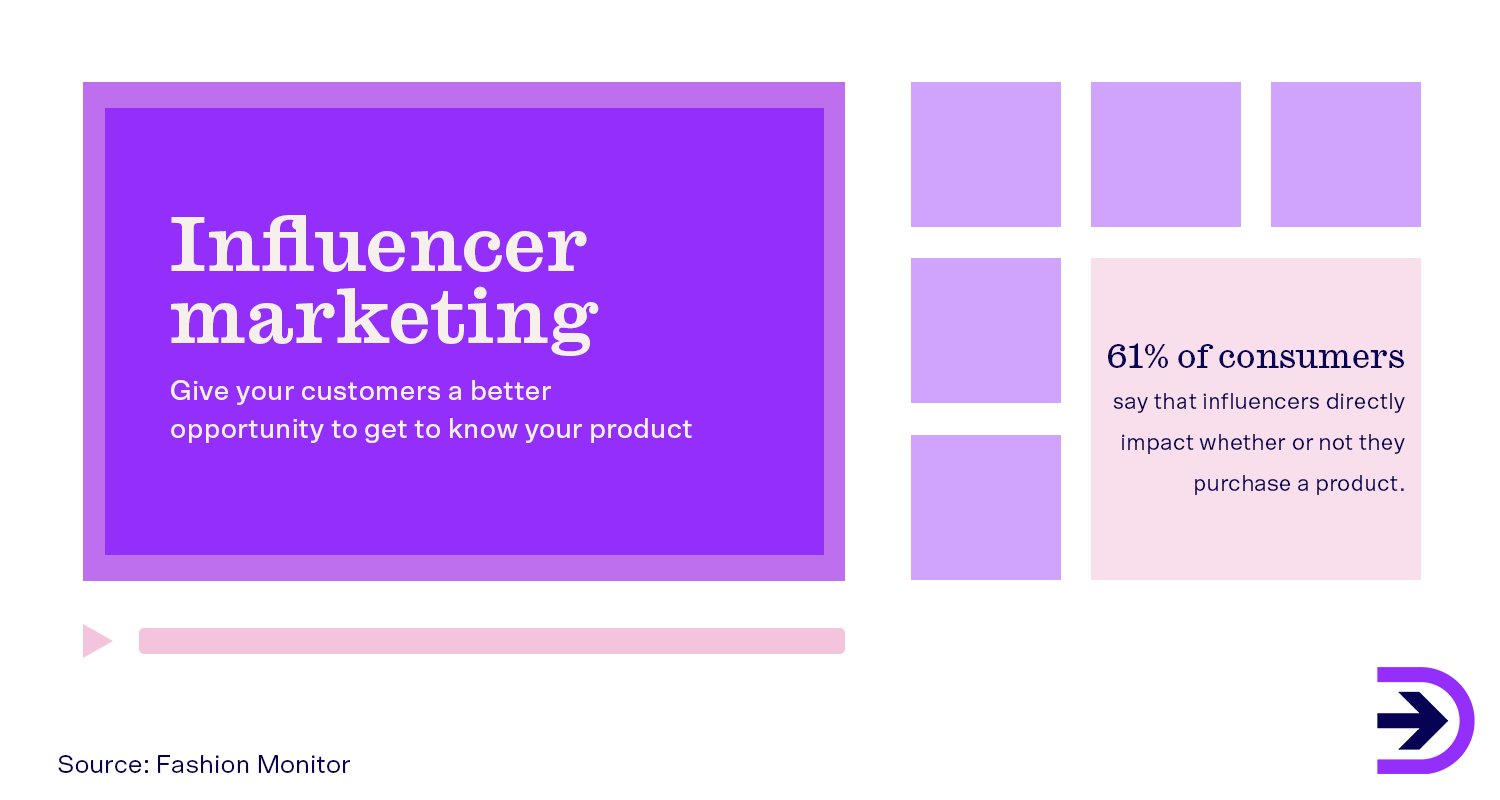
You can show people using the products in their daily lives and use influencer marketing to help connect you to a larger audience as 61 per cent of consumers say that influencers directly impact whether or not they purchase a product.
How has social commerce evolved over the years?
Facebook first examined social commerce in 2007 and by 2014 users could purchase items from Facebook without leaving the app.
From there other social media platforms began to explore social commerce and started implementing it into their own apps, Instagram introduced its own strategy in 2015, and in 2018 they came up with Shoppable posts, where ecommerce brands can tag products in photos and Instagram users can purchase in a couple of clicks.

During the pandemic, social commerce grew to nearly double what was expected in 2020 because people had more time to spend on social media, and started taking full advantage of the convenience of social commerce. Because of this, Facebook created Facebook Shops to allow stores to build online storefronts on the app.
In 2024, social commerce is well and truly here to stay, and it isn’t showing any signs of slowing down.
THE BEST SOCIAL MEDIA PLATFORMS TO INTEGRATE WITH YOUR ECOMMERCE BUSINESS
1. Facebook
Facebook has 2.94 billion active users each month, so it’s safe to say that if you’re not selling on Facebook, you’re missing out on a huge amount of customers and sales.
Facebook offers two platforms for retailers to integrate social commerce: Facebook Shops and Facebook Marketplace. The Shops allows businesses to customise their storefront and tailor the display to the app and helps you set up content optimised for mobiles easily. Customers can access your shop and add items to their cart, all within the Facebook app.
With Facebook, retailers can organise their products into categories and collections to make it easier for customers to shop, and you don’t have to worry about losing some of your brand identity. Facebook offers fully customisable layouts and colours, so retailers can build their online shop while knowing they can still stand out from the crowd.
Because Facebook has only recently launched the Shops tool at the end of 2022 and is only available in the US, the UK, Australia, Canada and Brazil, you may find you are ahead of many of your competitors in this space, so integrating your ecommerce business with Facebook will have several advantages.
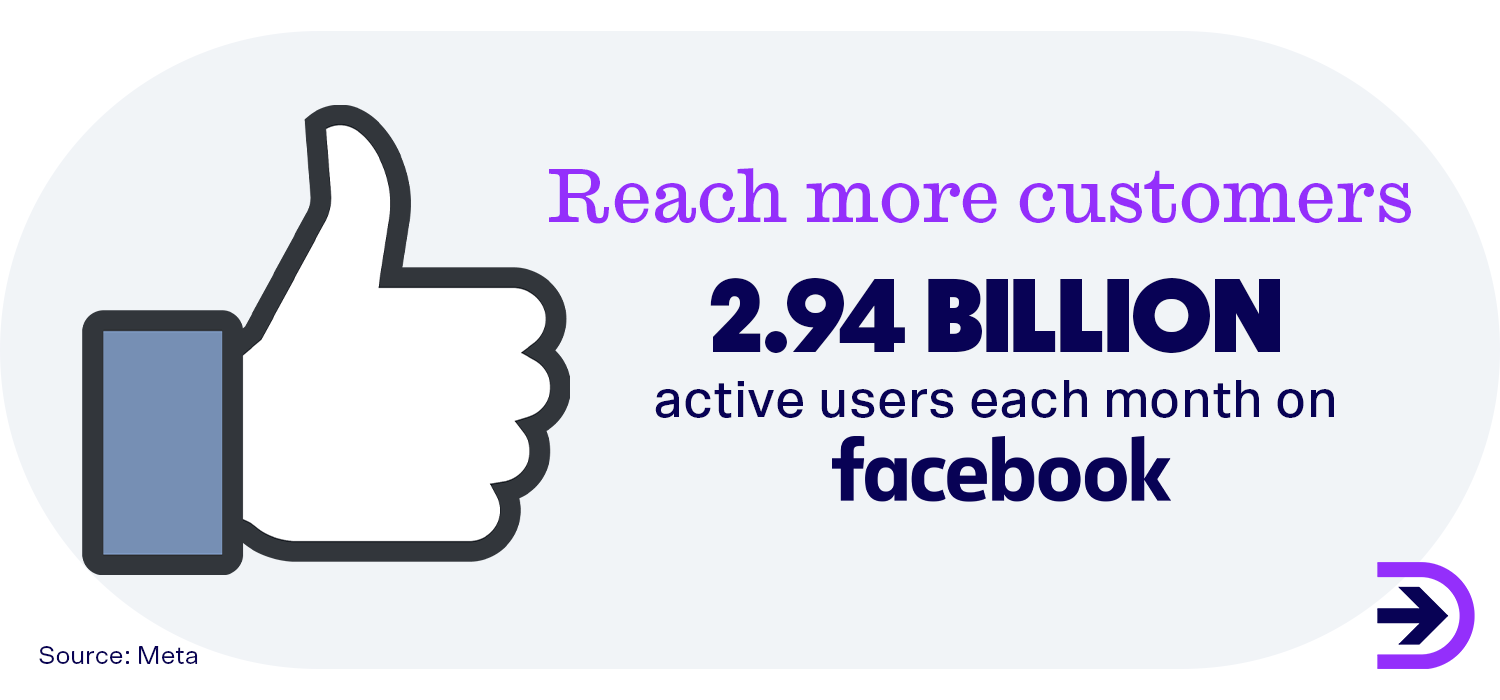
Benefits of Facebook Shops
Build relationships with customers with Facebook Messenger
Customers can message businesses with any queries they may have, allowing retailers to connect with their customers in a more meaningful way.
Customers like having the option to quickly connect to a business without having to send an email or pick up the phone, so using Facebook Messenger will be a great way to earn customer respect and build rapport.
Customers can save, like and share your products.
Just like with any post on Facebook, customers can choose to view your products, like, save, leave a comment, or share with friends. As a business owner, you will also have access to how many customers are engaging with your content and figure out what works and what doesn’t.
Easy checkout
With Facebook Shops, customers can shop through the app, without leaving the app. The checkout process is extremely customer-friendly and is popular because customers don’t have to interrupt their scrolling to purchase a product.
2. Instagram
Starting as a way for people to instantly share photos with their friends in 2010, Instagram has evolved into the social media giant of today, where people can still share photos and videos of themselves, but businesses also have the opportunity to showcase and advertise their products on the app.
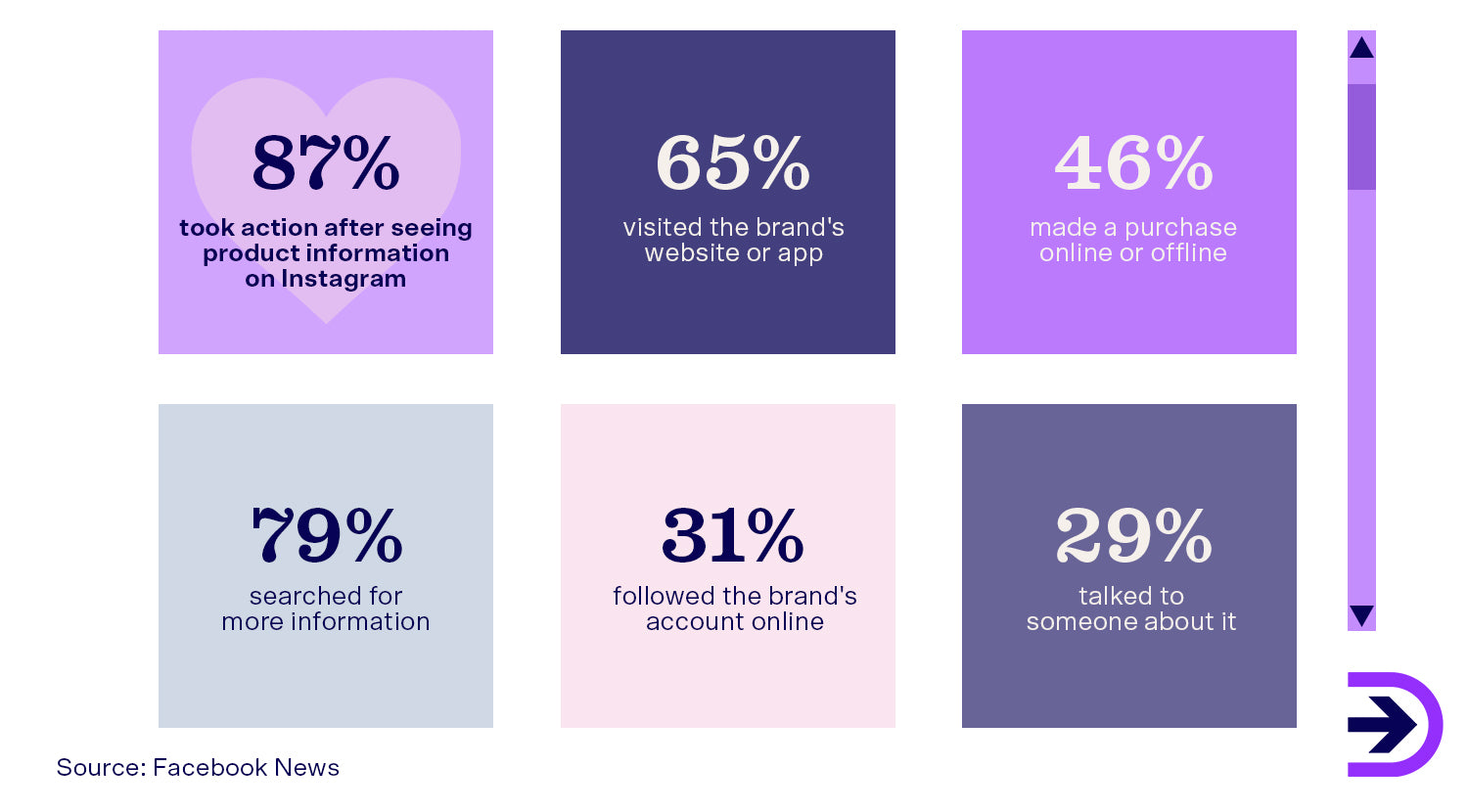
87 per cent of people said they took action after seeing a product on Instagram, so integrating your store within Instagram will be extremely beneficial as customers won’t have to leave the app to make a purchase.
Since Instagram is run by Facebook, you can easily integrate your Facebook business page with your Instagram account with just a few clicks. Customers will then be able to access your shop through your Facebook page and your Instagram profile.
Instagram Shop was launched in 2019 and has continued to develop to allow businesses to sell their products through posts, Stories, Reels and ads. It gives customers the ability to tap on a post and see what product tags are featured and the price, they can then click on those products that take them directly to the Instagram Shop.
You can get real-time insights about how well your products are selling and the level of engagement in your posts and stories. Instagram has a similar set up to Facebook and setting up a professional account is easy, and it’s even easier to sell directly on the app if you already have an existing Instagram profile for your business.
Benefits of Instagram Shop
Seen by more people
Having your products on such a heavily populated platform, with 1.386 billion daily users, your products are more likely to be discovered by customers who may never have viewed them before and build brand awareness.
Instagram also offers Instagram Live Shopping, where influencers live stream on behalf of a business to sell more products in real-time, giving you access to their followers as well.
Easy checkout
Like Facebook, Instagram Shop offers a seamless checkout process where customers don’t have to leave the app to purchase.
Get creative with marketing
Instagram offers a free marketing plan with tips personalised for your business, and you can purchase ads to further promote your products and see insights on your ad performance.
In 2023 87 per cent of marketers believed that using video marketing has increased their sales, so taking advantage of the visual capabilities on Instagram to market your products will be extremely beneficial. As it is a mainly visual app, you can get creative through Reels and Stories, and also photos and videos. You can create visual marketing to entice your customers that also feature the ability to add shopping links and product tags.
Instagram stories are a great way to help you build excitement around your brand and products. On stories, you can create things like FAQs, behind the scenes, product tutorials and a brand get-to-know-you.
3. TikTok
TikTok first launched in 2018 and is dedicated to short-form videos that range from 15 seconds to 3 minutes, and reached 1 billion active users in 2021. TikTok currently has approximately 33.3 million social buyers in the US alone, and that number is predicted to continue to increase in 2024.
TikTok Shop launched in 2021 with Shopify, and allows businesses to do live streams, post videos and create storefronts on the app, all while linking to their products. Businesses can collaborate with popular creators on the app and participate in TikTok’s various campaigns and promotions to help their sales.
Like Facebook and Instagram, TikTok has ways to measure engagement for creators, and you can easily see how many people are seeing your content as well as sharing, commenting and liking. You can also promote your content to increase your profile and website visits with paid advertisements on the app.
Benefits of TikTok Shop
Increases sales
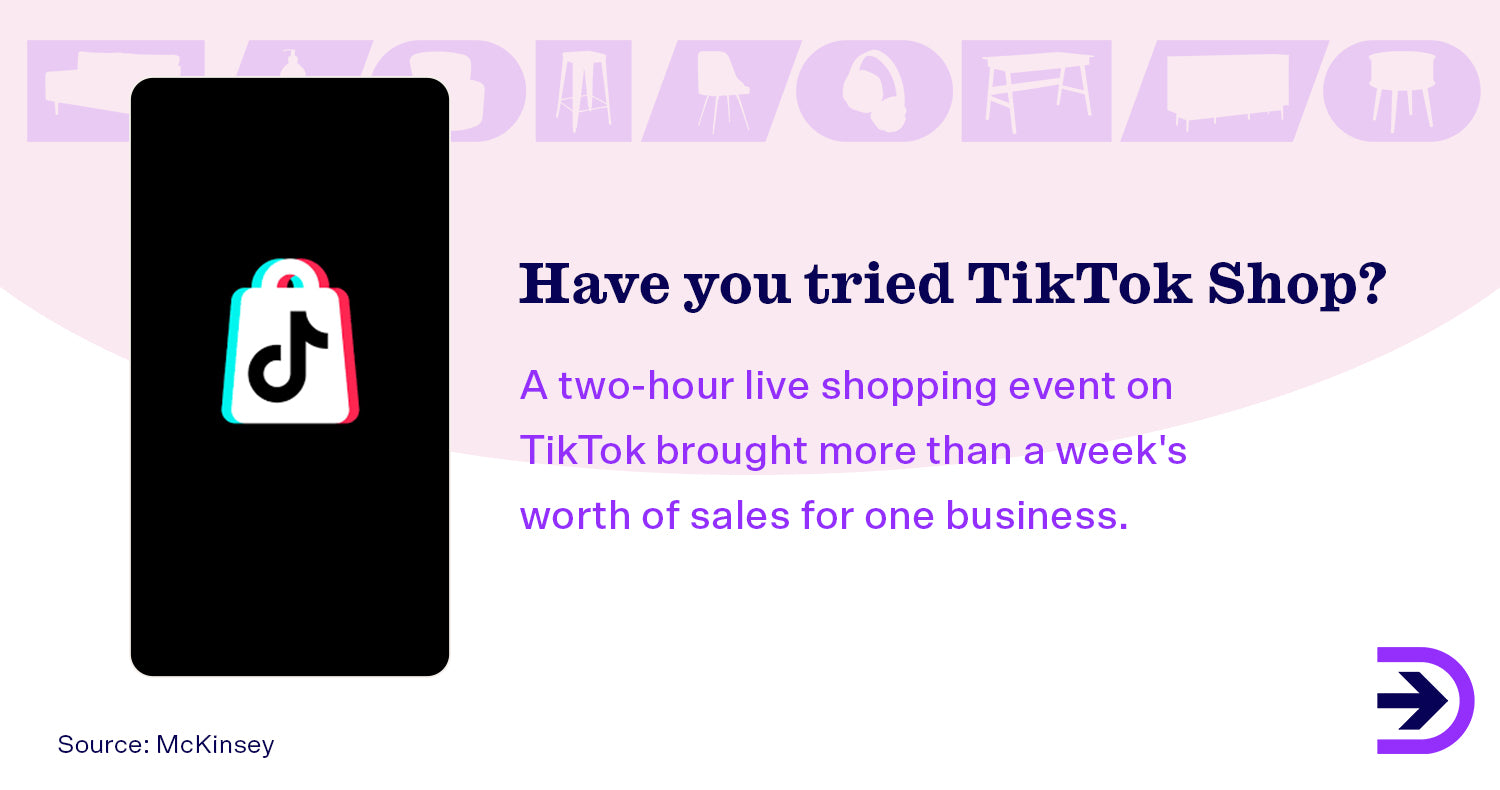
A two-hour live shopping event on TikTok brought more than a week's worth of sales for one business, and another business reported that they saw a 102 per cent increase in net revenue when they started selling with TikTok Shop.
It’s safe to say that TikTok has an engaged audience on the platform that will help encourage users to buy your products and drive sales.
Stay up to date with the latest trends
Because of the nature of TikTok and its fast-paced videos, many popular culture and social trends these days originate from TikTok. It will be beneficial for you as a business to place yourself on this app to see the latest trends, and you could also become one of the trendsetters over time.
4. Pinterest
Pinterest became a public platform in 2012 and is used as a way for people to get inspiration, save images of the things they like and share their ideas and dreams with other users.
Pinterest has been driving traffic to stores since 2012, with people finding things like outfit and interior inspiration through the app.
Pinterest is yet to make in-app purchases possible, so users still have to leave the app to buy a product. Customers can still view products on the app by seeing similar items when they click on an image or advertisement. Pinterest has a Shop tab that shows various Product Pins to highlight various brands and products and includes prices and descriptions.
Pinterest users can also create shopping lists to save their favourite items and see things like promotions or similar products.
Benefits of Pinterest
Your products are more discoverable
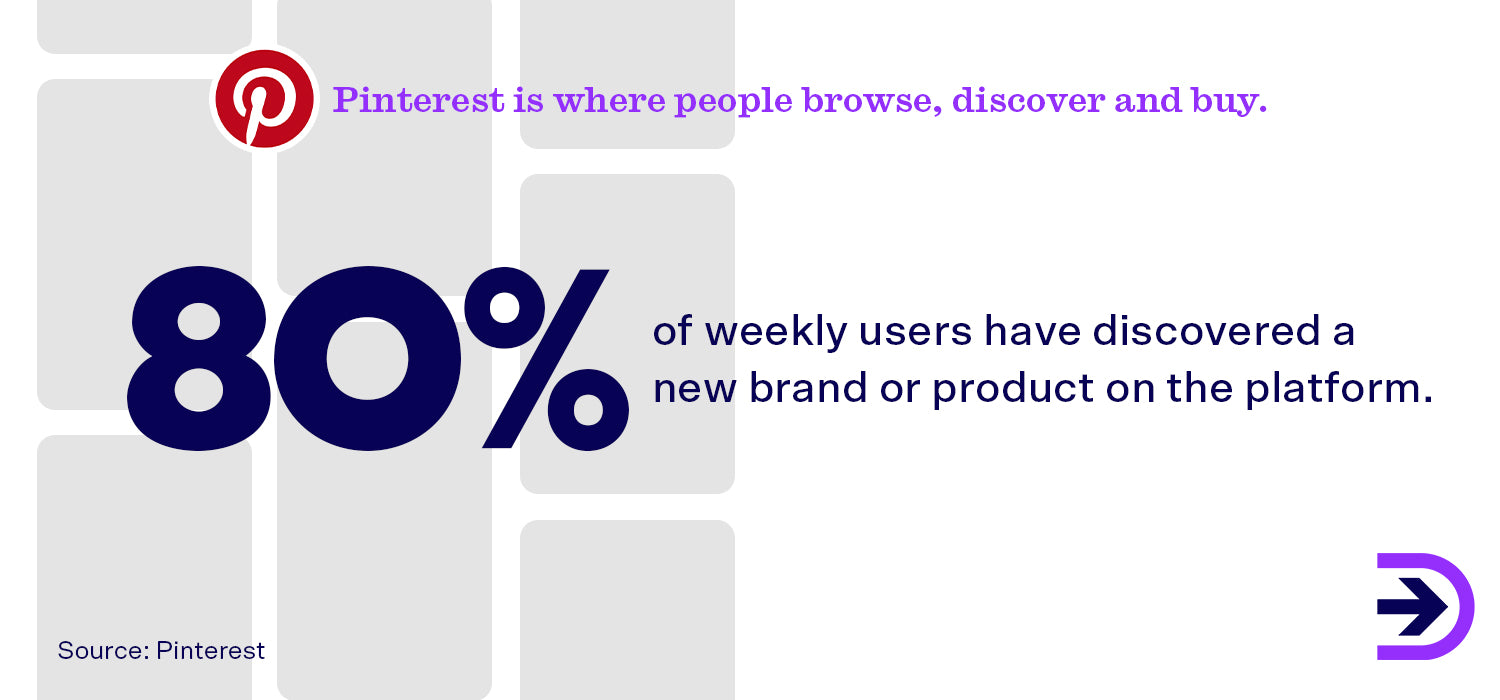
Pinterest is best known for sparking inspiration, and 80 per cent of users say they have discovered a new brand or product on the platform. If you choose to promote your products on Pinterest, you are likely to gain new customers who are more willing to test out your items because that is what their overall goal is when using the app.
You can still set up shop
Just because Pinterest doesn’t yet offer in-app purchases doesn’t mean that representing your brand on the platform isn’t possible.
Businesses can customise their storefront with pictures and videos that reflect their brand, and you can even sign up for Pinterest’s Verified Merchant Program which gives you an exclusive blue tick and shop tab. You can promote your products in one place just like Facebook and Instagram, the only difference is that customers will be taken to your website to check out.
2024 TRENDS IN SOCIAL COMMERCE
Now that we have highlighted the most popular social commerce platforms for businesses to integrate, let’s talk about some of the trends predicted to occur in 2024 in social media.
Firstly, platforms that favour short-form videos and live streaming, for example, TikTok, will continue to grow in popularity throughout the year. Short-form videos were shown to be the most popular format for social media marketing because of the ability to showcase products and capture the attention of users. Our advice is to keep your videos short and exciting, while also making them informative, and always use keywords in your hashtags to ensure maximum success.
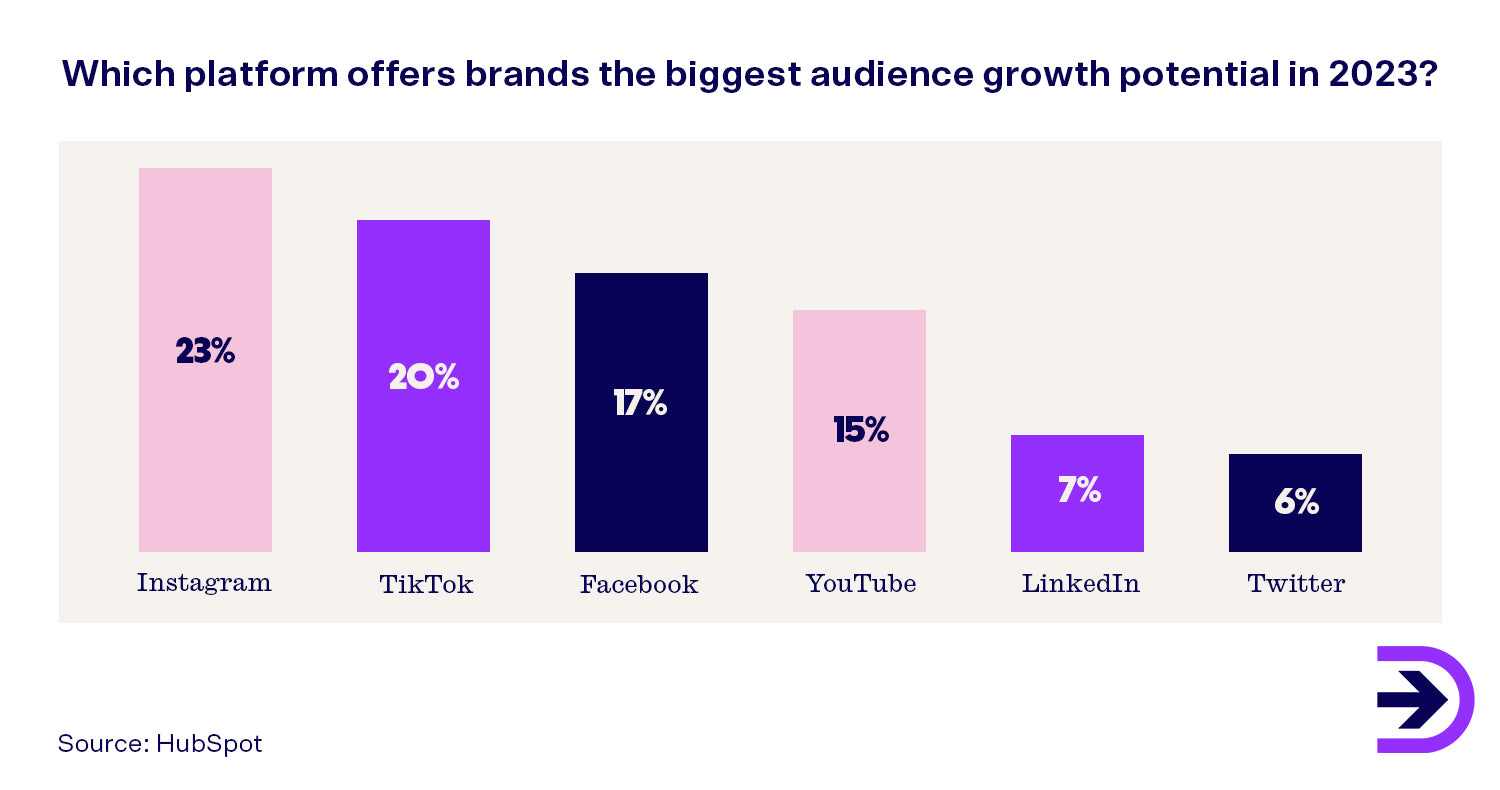
Instagram was predicted to grow the most out of all social media platforms in 2023, offering brands an easy way to grow their customer base. Although Facebook still has the most monthly active users and shoppers, we may see a shift in the coming years and see that Instagram overtakes Facebook in popularity.
Summary
Social commerce is the future of ecommerce, so it’s important to integrate social media networks with your online business to help you reach the most amount of customers possible. Out of all social media platforms, Facebook has the most active users each month so is likely to have the largest customer base. However, in 2024, it is predicted that Instagram will have the largest opportunity for growth for business owners. Luckily, Facebook owns Instagram, so it is easy to set up a shopfront on both platforms to ensure you’re not missing out on a big part of the market.
Social media platforms like TikTok that favour short-form videos will also become more popular in 2024, and your ecommerce business will be able to target Gen Z and Millennial age groups as they spend the most time on this app. Pinterest is still among the top social media platforms, however, it doesn’t have the capacity yet to allow customers to shop directly on the app. This is likely to change in the coming years, so it’s still a good idea to get familiar with the app’s shopping capabilities.

Overall, there has never been a better time to invest in social commerce, and you will be able to easily market your products to a wider customer base while offering seamless ways for them to checkout within your chosen social media apps.
FAQ
-
How does social commerce work?
Social commerce allows customers to shop online directly through a social media app, so shoppers don’t have to leave the app or get taken to a different website to checkout.
Social commerce is possible through tools implemented by different social media apps where businesses can set up a storefront within the app, like Facebook Shops, Instagram Shop or TikTok Shop.
-
When did social commerce start?
Social commerce was first introduced by Facebook in 2007 with Facebook Marketplace, where users could sell to other people within the app.
-
What are examples of social commerce?
Examples of social commerce include platforms like Facebook, Instagram, TikTok and Pinterest which have features that allow customers to browse and shop for products online within their social media apps.
-
What is the most popular social commerce platform? (2024)
Currently, Facebook leads social commerce and has the most monthly active users compared to other social commerce platforms.








